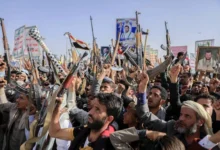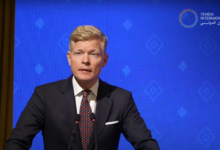Electricity Utilities Crisis in Aden the capital

SMA NEWS – ADEN THE CAPITAL
The national electrical grid in Aden was severely affected after 2015, sustained damage led to power outages in most parts of the city, severely affecting both the public at large as well as other utility sectors, most prominently, water, sanitation, and hygiene. Although power supply has rapidly increased since 2017, however, structural damages to facilities and infrastructure required considerable work to be done before being able to satisfy city’s daily electrical demands.
Yemen is the least connected country in the region in terms of electricity, with only 55% access rate from all power sources. Heavy Fuel Oil and diesel-fired power plants, owned by the Public Electricity Corporation (PEC), accounted for 70% of the grid-connected energy generation, In 2010.
Gaps
● Aden sustained the most damage in the energy and electricity sector in 2015. Despite the fact, that some of power stations have been revived, yet the electricity grid remains severely damaged.
● Scarcity of stock materials, insufficient financial support, and infrequent electrical service provision were proclaimed as the main problems related to the energy sector that require urgent intervention.
● Infrequent power supply influences the provisions of other services, most intensively water utilities, as the pumping stations require electricity supply.
● Street lighting is widely poor. Overall, main streets are well lit, nonetheless, street lighting infrastructure is by degrees damaged in all districts in the city.
● Electricity supply is unequal distributed throughout different districts in the city, with Al-Buraiqeh and Al-Shaikh Outhman districts least supplied, with an average of (0-4) hours per day during June – July 2021.
Electricity Infrastructure
With a capacity of 360 MW, Marib power station, considered to be the largest power plant in Yemen, supplying relatively 40% of Yemen’s energy. However, in 2011 to 2015, Marib power station sustained damage due to several attacks, and needed immediate rehabilitation. besides Marib Gas Power station, Aden city depends on three main power stations: Khur-Maksar, Al-Mansura, and Al-Hiswa power stations, which situated close to the coast in Al-Baraiqeh, built up by the soviet union and has been operating since 1986. The Khur-Maksar power station has an installed power capacity of 30 MW and has been operating since 1974.
Al-Mansura 1 and Al-Mansura 2 oil power stations were built in 2006, with a total installed power capacity of 139 MW, while Al-Hiswa oil power station has an installed power capacity of 125 MW. Nevertheless, Al-Hiswa power station was severely damaged during the conflict. In 2015, it resumed operations following rehabilitation. Nationally, as of 2016 the supply of electricity in the country depends overwhelmingly on fossil fuels for 80% of the installed power capacity, while natural gas and renewable energy amounted to 20%.
Aden Refinery, one of the only two refineries in Yemen, is the largest nationally and produced almost all of the national capacity of 140,000 bbl./d. in 2013. However, even prior to the conflict, the national demand was not met, and Yemen was dependent on petroleum imports.
Available Capacity
Power total blackouts are common across the country. During the war in 2015, half of Aden city had no power whatsoever. The lack of electricity has had a negative impact on the availability of water since pumping stations require adequate electricity supply. According to the World Bank’s Yemen Power Sector Reengagement Note (2017), most of the World Bank’s interventions in the previous decade were unsuccessful partly due to the lack of institutional capacity to handle large-scale electricity infrastructure projects. Oil and gas refineries sustained severe damage. Khur-Maksar and Al-Mansura power stations were out of service in 2016, while Al-Hiswa power station reduced its production capacity by less than three-quarters.
The local population was reportedly enjoying only an average of 6 hours of electricity per day. This also had a similar impact on infrastructure, water supply, and health sectors. Currently, most of the power plants, oil tanks and supply warehouses are partially functioning.
Electricity Demands
As indicated by Emergency Employment and Community Rehabilitation (EECR), electrical power is the most un-fit utility to fulfill people’s electricity demands. While electricity provision in Aden is the most grounded across Yemen with 29% of respondents expressing that electricity provision was “very” or “fairly” efficient, it stays the most sought supply for recuperation and recovery. Power infrastructure was accounted by 60% of respondents as the most harmed sector. It addresses the biggest number nationally and restoration of the electricity provision was referred to as one of the top three needs in the governorate. Right now, electricity specialists show that the power grid is to some extent damaged, and that the people have turned to alternative electricity sources.
The public grid stays the most widely common power source in Aden. Supply differs between districts, with the majority of the community focal points acknowledging four to twelve hours per day over the most recent a month. Al-Buraiqeh area is the most impacted, with most of respondents expressing that the people get as long as four hours of power each day. Sector specialists suggest that all areas in Aden get over twelve hours of power per day. As per sector experts, the three fundamental issues which require quick mediations are restocking materials and supplies, full resumption of utilities, and provision of sufficient financial means.
Solar power
The decline of power supply drove people to progressively depend on solar energy, which is handled by the private sector. Admittance to solar energy stays restricted. Nevertheless, most households can’t bear the cost of both acquisition of panels and long-term upkeep. Besides, parts are in constant gamble of breakdown given their poor technological qualities. On the other hand, installing a little generator or inverter batteries stays a reasonable option.
Albeit unfit to give supportable long-term answers, the latter option does give the fundamental least of power coverage during power outages. The Author has illustrated the potentials of utilizing sustainable renewable energy in Yemen in a prior article “Granting Sustainable Renewable Energy in Yemen Through Entrepreneurship and Innovation”.
Street lightening
Street lighting coverage across Yemen is proscribed. This also incorporates a harmful impact on street safety and ends up in higher crime rates and robberies. In Aden governorate, lamps of 400W and 250W capacity are used, with less than 30,000 250W lamps and just above 5,000 400W lamps. in keeping with local sources, commonly, only the primary streets in each district are well lit. Secondary streets and alleyways streets often stay in darkness. it had been also noted that the lighting on the highways is insufficient, which may cause hazardous driving conditions.
In Al-Buraiqeh, Al-Mansura, Al-Shaikh Outhman and Dar Sad the road lighting infrastructure is damaged, while in other districts it’s slightly damaged. In 2016, UAE reportedly signed an agreement to supply Yemen with $47 million to subsidize electricity in Aden. Under the terms of the agreement, the money is expected to procure parts for electricity and gas distribution networks. The agreement was signed between UAE Khalifa bin Zayed Foundation for Humanitarian Works and Yemen’s Ministry of Electricity to establish a new power station in Aden. The power plant is projected to cost $100 million and operate at a 120 MW capacity.
According to the participants at the Joint Analysis and Recovery Planning workshop, the UN Office for Project Services (UNOPS) proposed install 828 lighting poles powered by solar power and 500 were already implemented in 4 districts as of November 2019. UNOPS is currently requesting financial contribution to other stakeholders and also the international community so as to mobilize the remaining amount to be funded as an emergency project. Currently, there’s still a requirement of 3,400 lighting poles in 5 districts. LED lightings are needed. However, it’s important to indicate that the UN has been only supporting the road lighting based on the solar power, but not from the main source of the grid system. Therefore, further support is required for the main system to rehabilitate the entire energy source in Aden in the capital.







